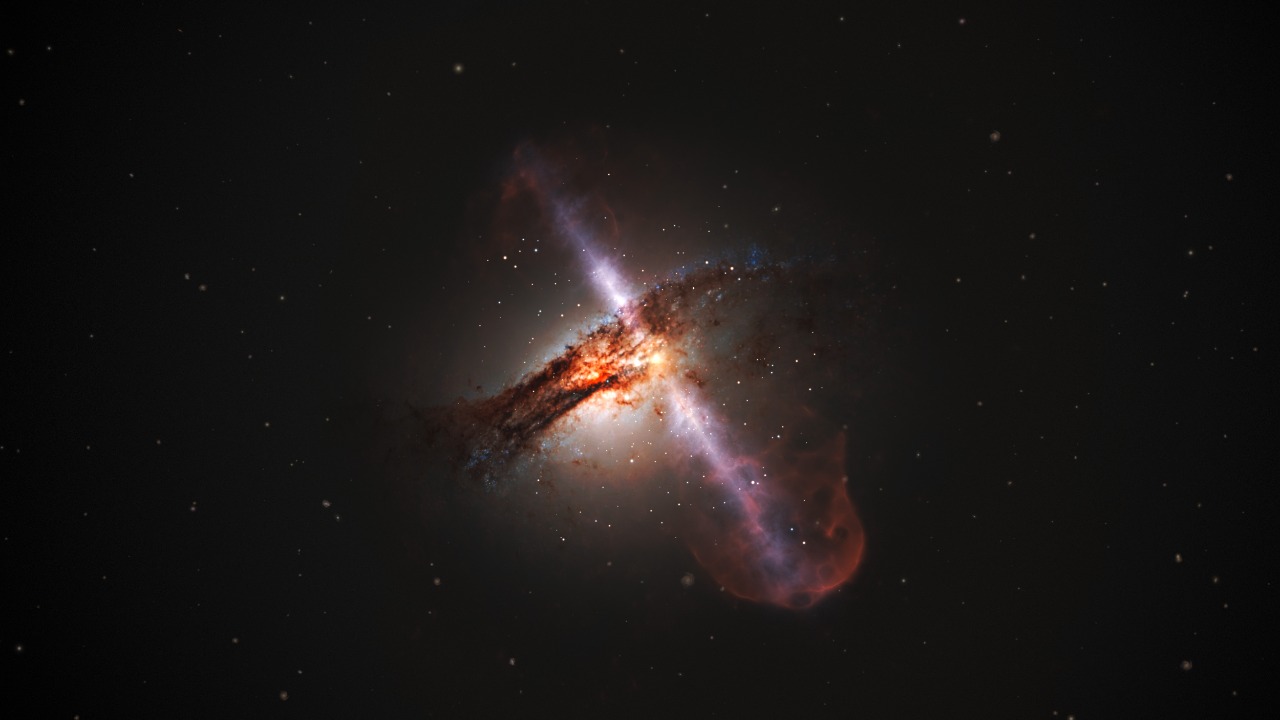
Astronomers have been astounded by the discovery of a rogue black hole that has emitted an unprecedented radio blast, marking a significant milestone in the field of astrophysics. This event, reported on October 17, 2025, highlights unexpected behavior from an isolated black hole not bound to any galaxy. The intensity of the blast sets a new benchmark for radio emissions detected from such objects, challenging existing theories about black hole activity and behavior.
Discovery of the Radio Blast
The initial detection of the radio blast from the rogue black hole was made using advanced radio telescopes, which picked up the unusually strong signal. The instruments involved in this discovery include some of the most sensitive radio arrays available, capable of detecting faint signals from the farthest reaches of the universe. The strength of the signal was unexpected, as it surpassed previous records for radio emissions from black holes, indicating a powerful and unique event [Science Daily].
Upon further analysis, astronomers identified the source of the blast as a rogue black hole, distinct from those typically found in galactic centers. This identification process involved tracing the signal’s origin and confirming its isolation from any known galaxy. The timeline leading to the confirmation of this discovery culminated on October 17, 2025, when the data was thoroughly vetted and the findings were announced. This record-breaking emission has been compared to previous observations, highlighting its unprecedented nature and prompting a reevaluation of what is known about black hole radio activity [Science Daily].
Characteristics of the Rogue Black Hole
The rogue black hole responsible for this remarkable radio blast is estimated to have a significant mass, though exact figures are still under study. Its status as a “rogue” black hole is emphasized by its isolation, as it wanders through intergalactic space without being tethered to any galaxy. This characteristic sets it apart from the more commonly studied black holes located at the centers of galaxies, which are often surrounded by dense matter and other celestial bodies [Science Daily].
Several mechanisms have been proposed to explain the radio blast, including interactions with surrounding gas or accretion processes that might have triggered such an intense emission. These interactions could involve the black hole consuming nearby matter, which then releases energy in the form of radio waves. Understanding these processes is crucial, as it could provide insights into the behavior of isolated black holes and their potential impact on the surrounding cosmic environment [Science Daily].
Implications for Astrophysics
This discovery challenges existing models of black hole evolution, particularly concerning rogue black holes that wander the universe independently. Traditional models have focused primarily on black holes within galaxies, but this event suggests that isolated black holes might play a more significant role in cosmic dynamics than previously thought. The findings could lead to a reevaluation of how black holes form, evolve, and interact with their environments [Science Daily].
Future observations are expected to focus on detecting similar events, with ongoing surveys playing a crucial role in identifying other rogue black holes. These efforts will likely involve a combination of radio, optical, and other wavelength observations to build a comprehensive understanding of these phenomena. The broader impact of this discovery extends to our understanding of cosmic radio phenomena and the demographics of black holes, potentially revealing new patterns and behaviors that could reshape current astrophysical theories [Science Daily].
Astronomers’ Reactions and Next Steps
The astronomical community has expressed both shock and excitement following the announcement of this discovery. The revelation of such a powerful radio blast from a rogue black hole has sparked widespread interest and discussion among scientists, who are eager to explore the implications of this event. This excitement is driving a wave of new research initiatives aimed at further investigating the characteristics and behaviors of rogue black holes [Science Daily].
Planned follow-up studies will include multi-wavelength observations to further characterize the black hole and its radio blast. These studies aim to gather more data on the black hole’s mass, spin, and environment, providing a clearer picture of the mechanisms behind the emission. By expanding the scope of observations, astronomers hope to uncover additional rogue black holes and gain deeper insights into their role in the universe, potentially leading to groundbreaking advancements in our understanding of cosmic phenomena [Science Daily].